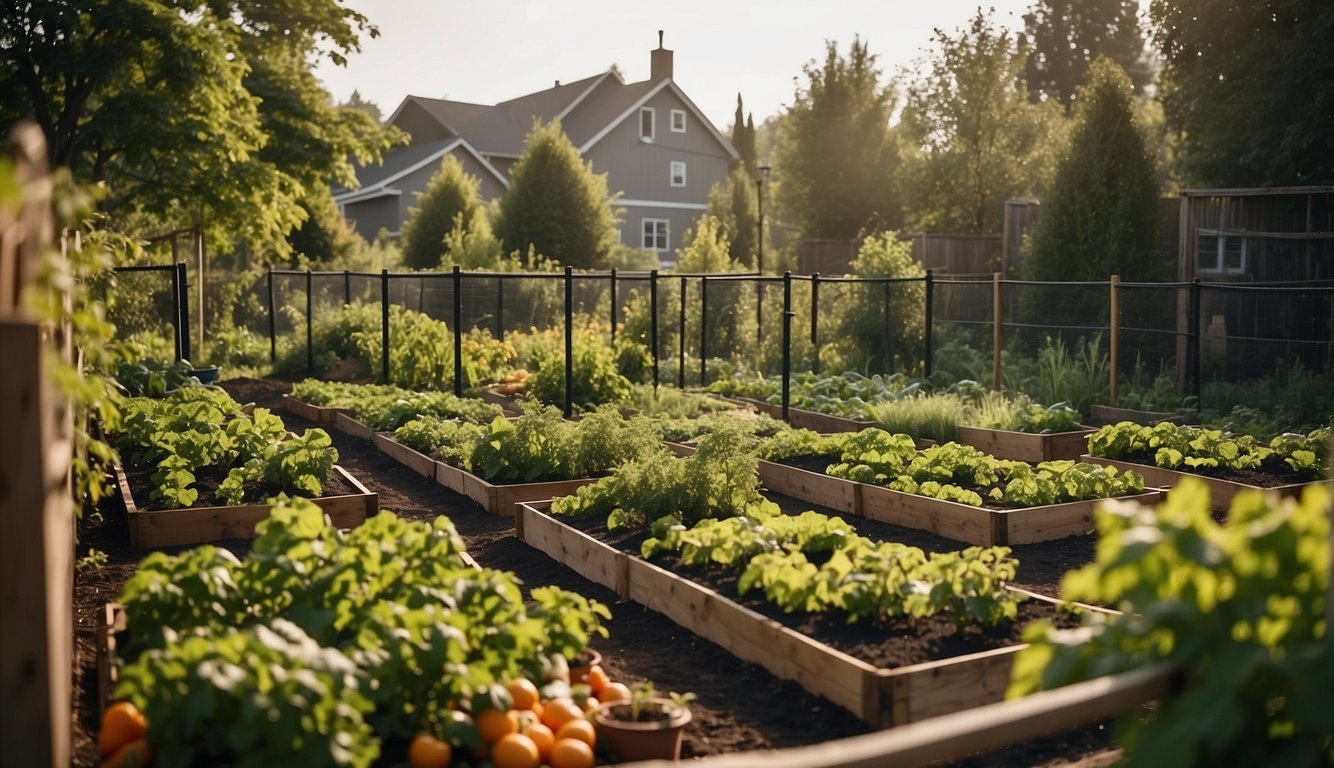TheHerbProf.com is a treasure trove of knowledge for those interested in natural healing and herbal remedies. The website is run by Paul Johnston MD. A naturopathic who has not only received extensive education in the field but also has personal experience in self-healing.
As a prepper, having a sustainable food supply is a top priority. One of the best ways to ensure you have a reliable food source is by creating a prepper garden. A prepper garden is a garden specifically designed to provide you with food during an emergency or survival situation.
Creating a prepper garden requires careful planning and consideration. You want to choose crops that are not only easy to grow, but also provide enough nutrients and calories to sustain you and your family. Some of the best crops to consider for a prepper garden include potatoes, sweet potatoes, corn, beans, peas, and carrots. These crops are easy to grow and provide a good source of carbohydrates, protein, and other essential nutrients. Additionally, nut trees such as hazelnuts, hickory nuts, and walnuts are a great addition to any prepper garden, as they provide a source of healthy fats and protein. By creating a prepper garden, you can ensure that you have a reliable food source in case of an emergency or survival situation.
Planning Your Prepper Garden – Get MY SURVIVAL FARM Action Plan and Checklist Here
As a prepper, one of the most important skills you can have is the ability to grow your own food. A prepper garden can provide you with fresh produce that is rich in nutrients, and it can also help you to become more self-sufficient. In this section, I will discuss some of the key considerations that you should keep in mind when planning your prepper garden.
Choosing the Right Location
The first step in planning your prepper garden is to choose the right location. You will want to select an area that receives plenty of sunlight and is well-drained. If possible, choose a spot that is sheltered from strong winds and has some shade during the hottest part of the day. Keep in mind that different plants have different requirements when it comes to sunlight, so you may need to choose a few different locations for different types of plants.
Determining Garden Size and Layout
The next step is to determine the size and layout of your garden. Consider the amount of space you have available and the amount of time and effort you are willing to invest in your garden. Raised beds can be a good option if you have limited space, as they allow you to grow more plants in a smaller area. You may also want to consider using compost and mulch to improve soil quality and reduce the need for watering and weeding.
Selecting Suitable Plants – Get MY SURVIVAL FARM Action Plan and Checklist Here
Finally, you will need to select the right plants for your prepper garden. Consider the climate and temperature in your area, as well as the amount of sunlight and shade that your garden receives. You may want to choose a mix of fruits, vegetables, and herbs that are well-suited to your climate and can provide you with a diverse range of nutrients. Keep in mind that some plants are more difficult to grow than others, so you may want to start with simpler plants before moving on to more challenging ones.
By following these tips, you can create a prepper garden that will provide you with fresh, healthy produce for years to come. With a little bit of planning and effort, you can become more self-sufficient and better prepared for any emergency situation.
Soil Preparation and Management
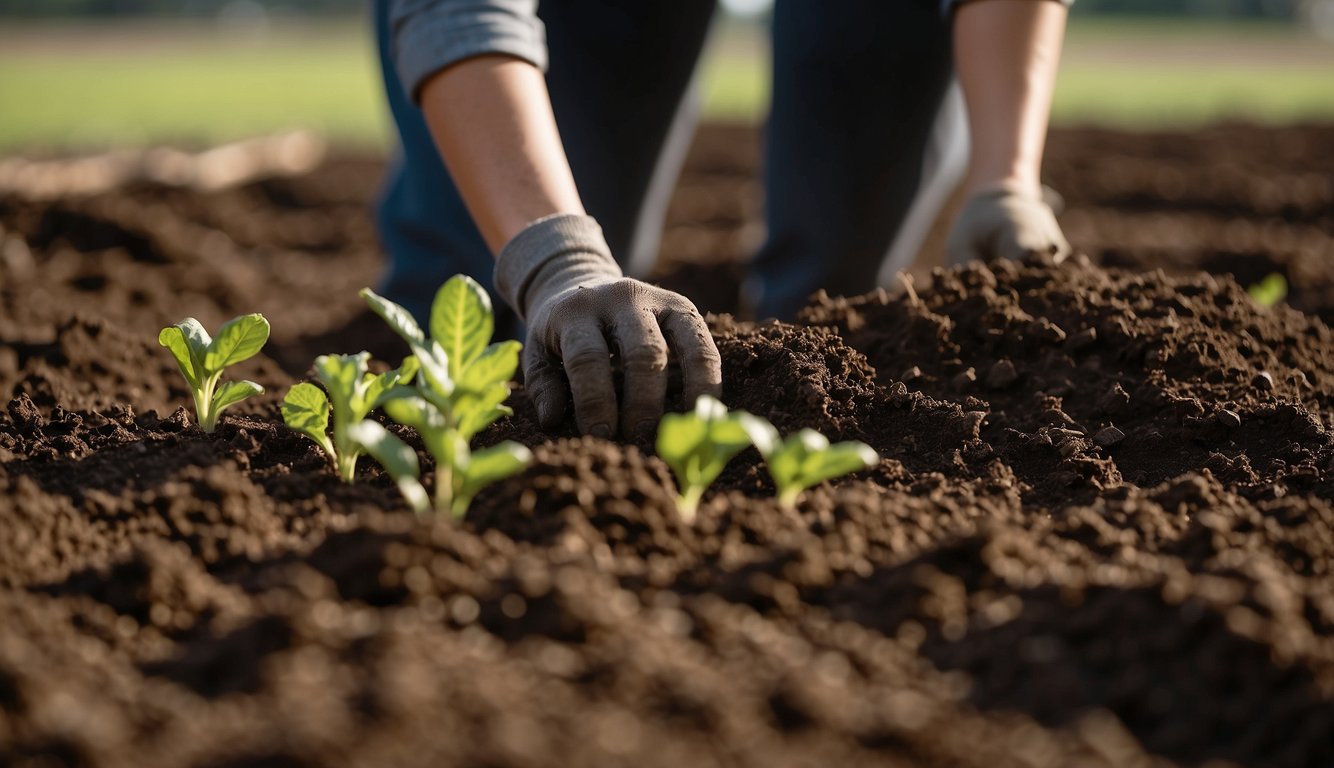
As a prepper, I know that a successful garden starts with healthy soil. Proper soil preparation and management are essential to ensure that your plants get the necessary nutrients to grow strong and healthy. In this section, I will discuss the best practices for soil preparation and management.
Improving Soil Fertility
Improving soil fertility is crucial for a successful prepper garden. One of the best ways to do this is by adding organic matter to the soil. Organic matter, such as compost, helps to improve soil structure, increase water-holding capacity, and provide nutrients to plants. When preparing your soil, I recommend adding compost to a depth of 30cm (1′) and using proportions of 25% compost to 75% soil. This ratio will provide your plants with the necessary nutrients while still allowing for proper drainage.
Another way to improve soil fertility is by using cover crops. Cover crops, such as clover or alfalfa, are planted to protect and improve soil health during periods when the garden is not in use. These crops help to prevent soil erosion, reduce weed growth, and add nutrients to the soil.
Mulching Techniques – Best Prepper Garden
Mulching is an essential technique for prepper garden soil management. Mulch helps to retain moisture in the soil, prevent weed growth, and regulate soil temperature. Organic mulches, such as straw or leaves, are an excellent choice for prepper gardens because they break down over time and add nutrients to the soil.
When applying mulch, I recommend using a layer of 5-10cm (2-4″) around the base of your plants. Be careful not to apply too much mulch, as this can prevent water from reaching the roots of your plants.
Get MY SURVIVAL FARM Action Plan and Checklist Here – Composting Essentials
Composting is a vital part of soil preparation and management. Composting helps to reduce waste, produce nutrient-rich soil, and improve soil structure. When composting, it is essential to use a mix of green and brown materials. Green materials, such as vegetable scraps and grass clippings, provide nitrogen, while brown materials, such as leaves and twigs, provide carbon.
To start composting, I recommend using a compost bin or pile. Place your green and brown materials in alternating layers, and be sure to keep the pile moist. Turn the pile every few weeks to ensure that the materials are breaking down evenly.
Soil preparation and management are essential for a successful prepper garden. By improving soil fertility, using proper mulching techniques, and composting, you can ensure that your plants get the necessary nutrients to grow strong and healthy.
Essential Prepper Crops – Get MY SURVIVAL FARM Action Plan and Checklist Here

As a prepper, having a garden that can provide you with essential crops is crucial. These crops should be able to provide you with the necessary calories and nutrients to keep you and your family healthy and sustained during an emergency. In this section, I will cover some of the essential prepper crops that you should consider growing in your garden.
High-Calorie Crops – Best Prepper Garden
When it comes to prepping, having high-calorie crops is essential. These crops will provide you with the necessary energy to keep you going during an emergency. Some of the best high-calorie crops to consider growing include potatoes, corn, and sweet potatoes. These crops have a high calorie yield and are easy to grow in most climates.
Nutrient-Rich Vegetables
In addition to high-calorie crops, it’s also important to have nutrient-rich vegetables in your prepper garden. These vegetables will provide you with the necessary vitamins and minerals to keep you healthy during an emergency. Some of the best nutrient-rich vegetables to consider growing include carrots, tomatoes, kale, spinach, and peas. These vegetables are easy to grow and provide a high yield.
Easy-to-Grow Fruits
Finally, it’s important to consider adding some easy-to-grow fruits to your prepper garden. Fruits are a great source of vitamins and minerals, and they can also provide you with a quick energy boost. Some of the best easy-to-grow fruits to consider growing include squash and beans. These fruits are easy to grow and provide a high yield.
Having an essential prepper garden is crucial for any prepper. By growing high-calorie crops, nutrient-rich vegetables, and easy-to-grow fruits, you can ensure that you and your family have the necessary calories and nutrients to sustain yourselves during an emergency.
Maximizing Harvest and Storage – Best Prepper Garden
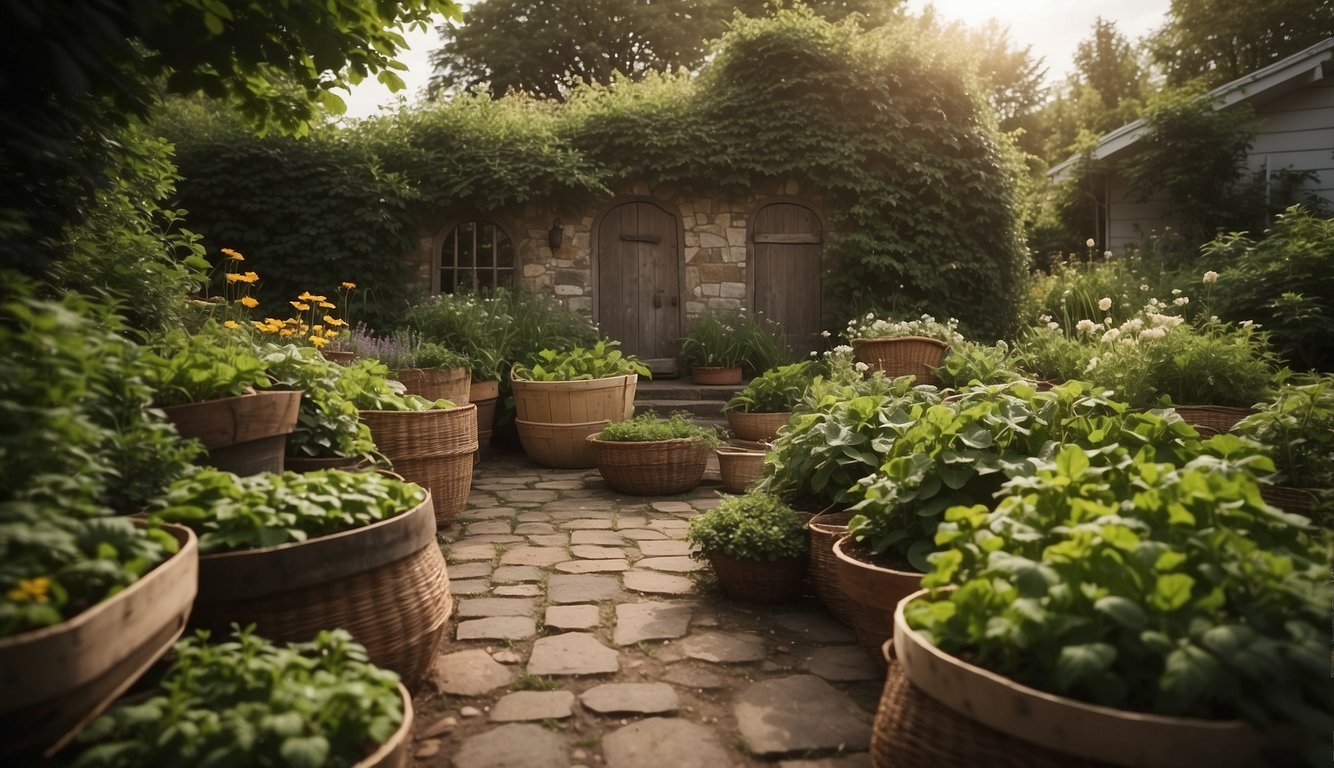
As a prepper, maximizing the harvest and storage of your garden produce is crucial to ensure you have a reliable food supply during difficult times. In this section, I will discuss some tips and techniques to help you extend the growing season, preserve your harvest, and store your produce for longevity.
Extending the Growing Season – Best Prepper Garden
To extend the growing season, consider using season extenders such as row covers, cold frames, or hoop houses. These structures help protect your plants from frost and cold temperatures, allowing you to plant earlier in the spring and harvest later into the fall. You can also use heat-loving plants such as tomatoes and peppers to trap heat and maintain warmer temperatures inside your structures.
Another way to extend the growing season is by planting cold-hardy crops such as spinach, kale, and root vegetables. These crops can withstand cooler temperatures and even frost, allowing you to harvest well into the fall and winter months.
Preservation Techniques
Preserving your harvest is essential to ensure you have a reliable food supply year-round. Canning, dehydrating, and freezing are all great ways to preserve your produce.
Canning is a great preservation technique for high-acid foods such as tomatoes and pickles. Dehydrating is perfect for fruits and herbs, while freezing is ideal for vegetables and fruits.
Storing for Longevity – Best Prepper Garden
Storing your produce properly is crucial to ensure it lasts as long as possible. Root vegetables such as potatoes, carrots, and onions are easy to store and can last for months when stored in a cool, dark place. Apples, pears, and citrus fruits can also last for several months when stored in a cool, dry place.
Consider investing in a root cellar or building a DIY root cellar to store your produce long-term. A root cellar helps maintain a cool, consistent temperature, and humidity level, which is ideal for storing root vegetables, apples, and other produce.
Maximizing the harvest and storage of your prepper garden is crucial to ensure you have a reliable food supply year-round. By extending the growing season, preserving your harvest, and storing your produce properly, you can ensure your family has access to fresh, healthy food during difficult times.
Perennial Plants and Food Forests
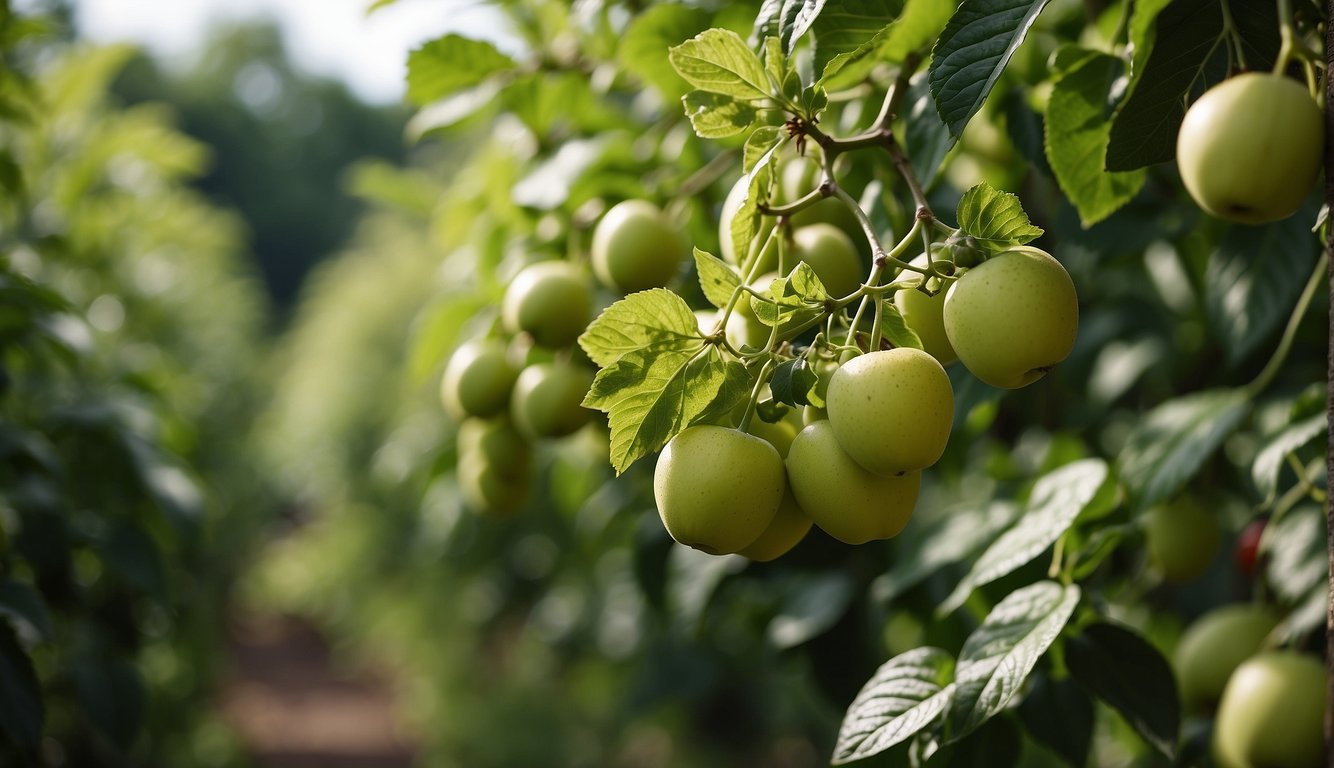
As a prepper, I know the importance of having a long-lasting and sustainable garden. That’s why I always include perennial plants and food forests in my garden plan. Here are some advantages of using perennials and designing a food forest:
Advantages of Perennials – Best Prepper Garden
Perennials are plants that come back year after year, making them a great investment for any garden. Unlike annuals, which must be replanted every year, perennials only need to be planted once and will continue to produce for several years. This means less work and more food for you.
Perennial plants also tend to be hardier and more resistant to pests and diseases than annuals. This means less need for pesticides and other chemicals, making your garden more eco-friendly.
Designing a Food Forest
A food forest is a garden design that mimics a natural forest ecosystem. It includes several layers of plants, from tall trees to groundcover, and is designed to be self-sustaining.
In a food forest, fruit trees are planted as the top layer, providing shade and shelter for the layers below. Underneath the fruit trees, bushes and shrubs like berries and nuts are planted. These plants provide food for both humans and wildlife.
The next layer is made up of herbs and other perennial plants like asparagus. These plants help to suppress weeds and provide additional food.
Finally, groundcover plants like strawberries and clover are planted to cover the soil and prevent erosion.
By designing a food forest, you can create a garden that is not only sustainable but also beautiful and diverse. Plus, with the right planning, a food forest can provide food for years to come.
Overall, including perennial plants and designing a food forest is a smart choice for any prepper looking to create a sustainable and long-lasting garden.
Pest and Disease Control – Best Prepper Garden

As a prepper gardener, I know that pest and disease control is crucial to ensuring a successful harvest. There are several effective strategies to manage pests and diseases in your garden. In this section, I will discuss some of the most effective pest and disease control methods.
Organic Pest Management
As an organic gardener, I prefer to use natural pest control methods that do not harm the environment or beneficial insects. One effective method is companion planting. Companion planting involves planting certain plants together to repel pests and attract beneficial insects. For example, planting marigolds around your vegetable garden can help repel pests such as aphids and nematodes.
Another effective organic pest management strategy is using physical barriers such as fences to keep pests out of your garden. This is especially useful for larger pests such as deer and rabbits. Additionally, using organic insecticides such as neem oil and insecticidal soap can help control pest populations without harming beneficial insects.
Disease Prevention Strategies – Best Prepper Garden
Preventing diseases in your garden is just as important as managing pests. One effective disease prevention strategy is crop rotation. Crop rotation involves planting different crops in different areas of your garden each year to prevent the buildup of soil-borne diseases.
Another effective disease prevention strategy is practicing good sanitation. This involves removing diseased plant material from your garden and cleaning your garden tools between uses to prevent the spread of diseases.
Managing pests and diseases is essential to maintaining a healthy prepper garden. By using organic pest management methods and disease prevention strategies, you can ensure a successful harvest and be well-prepared for any emergency situation.
Gardening Techniques and Tools
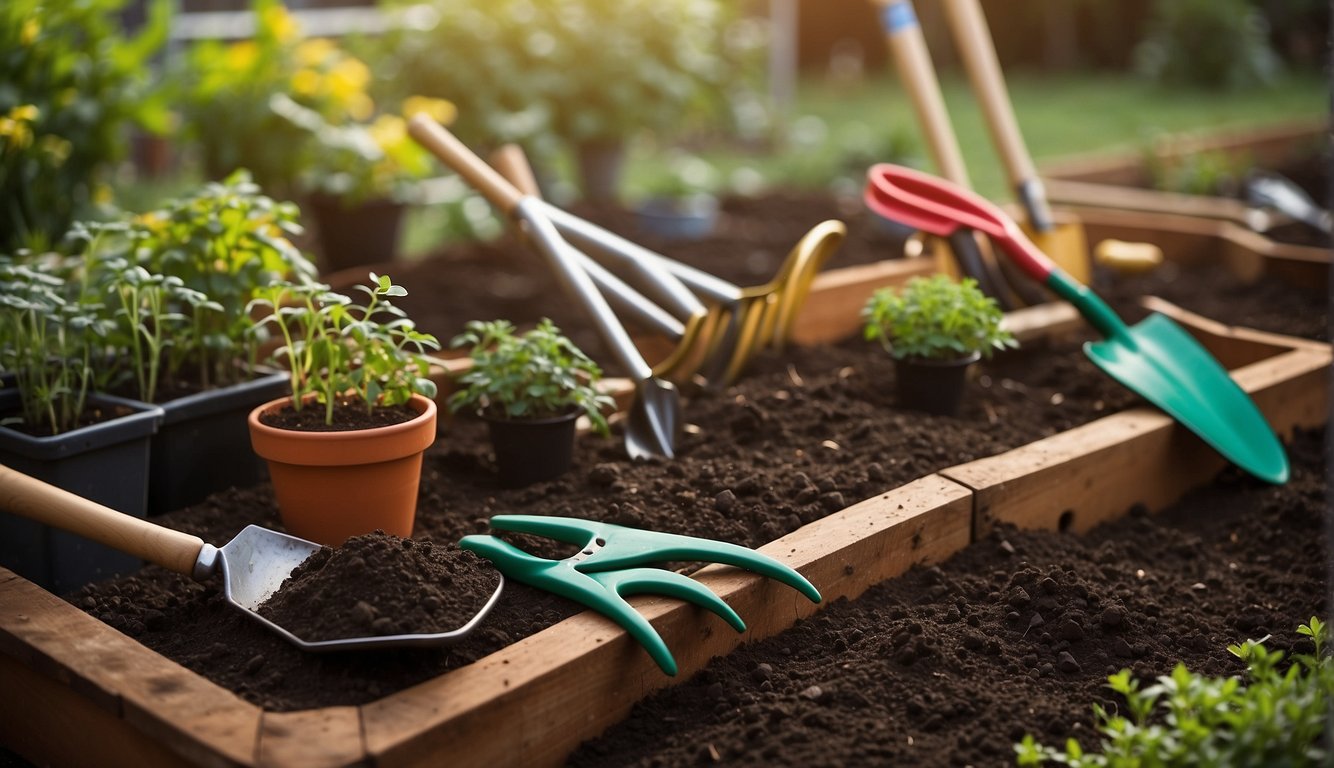
As a prepper, it is important to know the most effective gardening techniques and tools for maximum yield and efficiency. In this section, I will discuss two essential aspects of gardening: effective watering methods and essential gardening tools.
Effective Watering Methods – Best Prepper Garden
Watering is crucial to the growth of plants, and it is important to ensure that they receive the right amount of water. Overwatering can lead to root rot and other diseases, while underwatering can cause the plants to wilt and die.
One effective watering method is the use of olla pots. Olla pots are unglazed clay pots that are buried in the soil with the neck sticking out. The pots are filled with water, and the water seeps out slowly through the porous clay, providing a steady supply of water to the plants’ roots. This method is particularly useful in arid regions where water is scarce.
Another effective watering method is drip irrigation. Drip irrigation systems use a network of tubes and emitters to deliver water directly to the plants’ roots. This method is efficient and can reduce water usage by up to 50%.
Essential Gardening Tools – Get MY SURVIVAL FARM Action Plan and Checklist Here
Having the right tools is essential for any gardener. Here are some of the most essential gardening tools:
- Gloves: Gardening gloves protect your hands from cuts, scrapes, and blisters. They also provide a better grip on tools and prevent soil from getting under your nails.
- Hand trowel: A hand trowel is a small, handheld tool used for digging, planting, and weeding. It is an essential tool for any gardener.
- Pruning shears: Pruning shears are used for cutting back plants, removing dead or diseased branches, and shaping plants. They come in different sizes, so it is important to choose the right size for the job.
- Hoe: A hoe is used for cultivating the soil, removing weeds, and shaping beds. It is an essential tool for any gardener.
- Watering can: A watering can is used to water plants by hand. It is a simple tool, but an essential one.
Effective watering methods and essential gardening tools are both crucial for a successful prepper garden. By using the right techniques and tools, you can ensure that your garden produces a bountiful harvest.
Special Considerations for Prepper Gardening – Best Prepper Garden

As a prepper, there are special considerations that you need to take into account when planning and planting your garden. In this section, I will discuss two important considerations: dealing with limited resources and adapting to climate variability.
Dealing with Limited Resources
When it comes to prepper gardening, one of the biggest challenges is dealing with limited resources. You may not have access to the same tools, fertilizers, and pesticides that traditional gardeners have. Additionally, you may not have access to ample water sources or be able to rely on gasoline to power a rototiller.
To overcome these challenges, you need to think creatively and adapt your gardening practices to fit your situation. For example, you can plan low water growing methods such as drip irrigation or use natural fertilizers like compost. You can also consider using hand tools or animal-powered tools instead of gasoline-powered tools.
Adapting to Climate Variability – Best Prepper Garden
Another important consideration for prepper gardening is adapting to climate variability. Climate change has led to more extreme weather events such as droughts, floods, and heatwaves. These events can have a significant impact on your garden and your ability to grow food.
To adapt to climate variability, you need to choose plants that are resilient and can withstand extreme weather conditions. You can also consider using techniques such as mulching and crop rotation to help protect your plants from extreme temperatures and weather events.
Prepper gardening requires a different approach than traditional gardening. By taking into account special considerations such as limited resources and climate variability, you can create a garden that will provide you with a reliable source of food in times of emergency or survival situations.
Harvesting and Using Your Garden’s Bounty
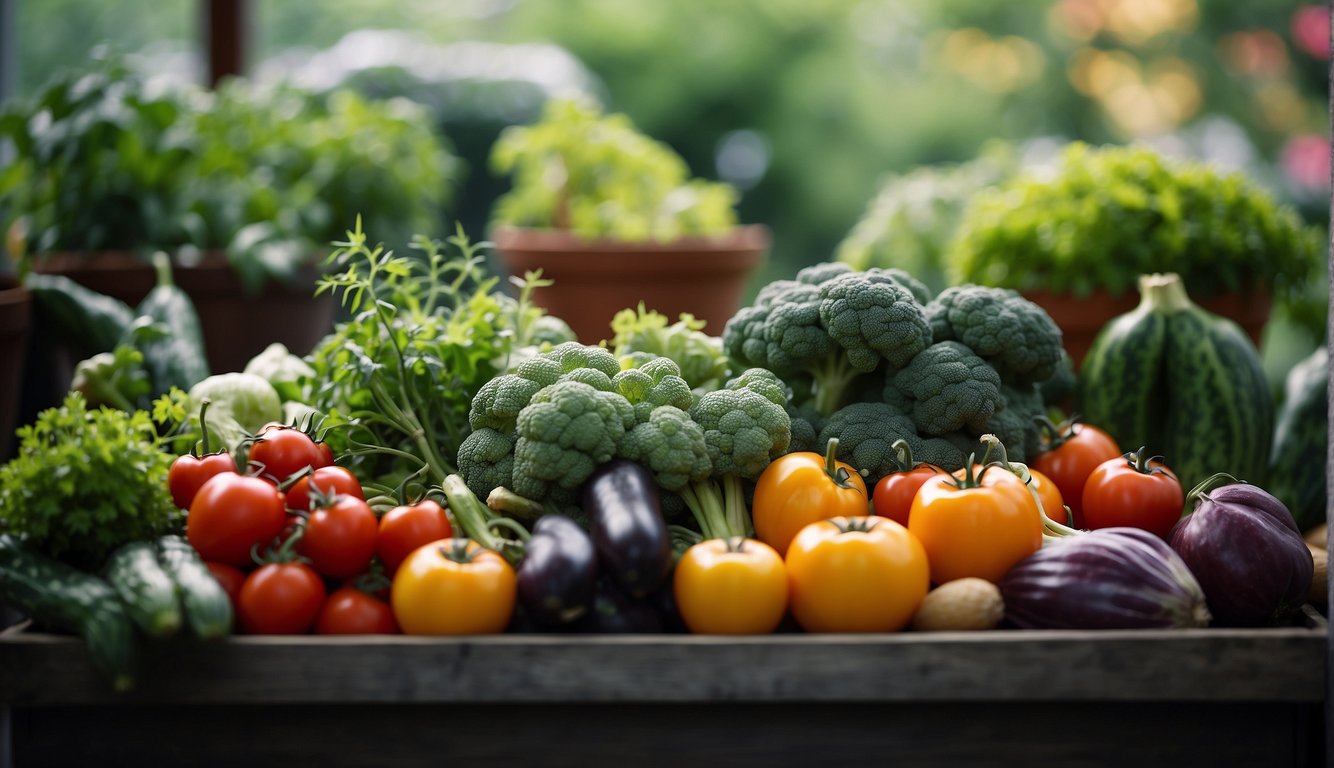
As a prepper, having a survival garden is a crucial part of your preparedness plan. One of the most satisfying aspects of having a garden is reaping the rewards of your hard work and enjoying the fresh produce. In this section, I will discuss how to harvest your crops and utilize every part of the plant.
Timing Your Harvests – Best Prepper Garden
Timing is everything when it comes to harvesting your crops. Picking your vegetables at the right time ensures that they are at their peak flavor and nutritional value. Harvesting too early or too late can result in a less flavorful and less nutritious yield.
It’s important to note that different vegetables have different maturation times. For example, tomatoes are ready to be harvested when they are fully ripe, while leafy greens like lettuce and spinach should be harvested when they are still young and tender.
To determine the best time to harvest your crops, refer to the seed packet or do some research online. You can also do a taste test by sampling a small portion of the crop to see if it’s ready.
Utilizing Every Part of the Plant – Get MY SURVIVAL FARM Action Plan and Checklist Here
When harvesting your crops, it’s important not to waste any part of the plant. Many parts of the plant, including the leaves, stems, and roots, are edible and can be used in a variety of ways.
For example, carrot tops can be used to make pesto, and beet greens can be sautéed and eaten like spinach. You can also use the seeds from your crops to make nutritious snacks or add protein to your meals.
In addition to using every part of the plant, you can also preserve your harvest for later use. Canning, freezing, and dehydrating are all great ways to preserve your produce and ensure that you have access to fresh, nutritious food throughout the year.
By timing your harvests and utilizing every part of the plant, you can make the most of your prepper garden and ensure that you have a steady supply of food, vitamins, and minerals.
Connecting the Dots: The Herb Prof and the Best Prepper Garden
Let’s talk about how theherbprof.com and the Best Prepper Garden are two peas in a pod.
First off, theherbprof.com is your go-to for all things herbal. It’s a treasure trove of knowledge, bursting with information on every herb you can think of. Now, imagine coupling that with the Best Prepper Garden. It’s like Batman and Robin, but for plants!
The Best Prepper Garden is all about self-sufficiency. It’s about growing your own food and being prepared for anything. But here’s the kicker – it’s not just about veggies. Herbs are a big part of the picture too!
That’s where theherbprof.com comes in. It’s the perfect companion to your prepper garden. Want to know which herbs can help with digestion? Or which ones are great for repelling pests? Theherbprof.com has got you covered!
So, in a nutshell, theherbprof.com and the Best Prepper Garden are a match made in heaven. They’re like two sides of the same coin, each enhancing the other. And the best part? They make gardening a whole lot more fun and rewarding!
Remember, folks, a garden without herbs is like a library without books. So, let’s get planting and make the most of these fantastic resources! Happy gardening!
References – Best Prepper Garden
Little Herb Encyclopedia, by Jack Ritchason; N.D., Woodland Publishing Incorporated, 1995
The Ultimate Healing System, Course Manual, Copyright 1985, Don Lepore
Planetary Herbology, Michael Tierra, C.A., N.D., Lotus Press, 1988
Handbook of Medicinal Herbs, by James A. Duke, Pub. CRP Second Edition 2007
The Complete Medicinal Herbal, by Penelope Ody, Published by Dorling Kindersley
Check the Following Articles!
Can You Compost Avocado Pits? Let’s Dig In!
Garden Tower 2 Review: The Vertical Gardening System
How to Propagate Thanksgiving Cactus: The Step-by-Step
Frequently Asked Questions – Best Prepper Garden

What are the top survival crops to grow for self-sufficiency?
The top survival crops to grow for self-sufficiency include potatoes, beans, corn, squash, and tomatoes. These crops are easy to grow and provide a good source of nutrition. Additionally, they can be stored for long periods of time and can be used in a variety of recipes.
Which vegetables are essential for a year-round prepper garden?
The vegetables that are essential for a year-round prepper garden include leafy greens, such as kale and spinach, root vegetables like carrots and beets, and cold-hardy crops such as broccoli and cauliflower. These vegetables can be grown in different seasons and provide a variety of nutrients.
How do you design an effective survival garden layout?
To design an effective survival garden layout, consider factors such as the size of your garden, the amount of sunlight it receives, and the types of crops you want to grow. It is important to plan for crop rotation, companion planting, and pest control. You can also consider using raised beds or containers to maximize space and make gardening easier.
What is the easiest and most calorie-dense food to grow for emergency preparedness?
The easiest and most calorie-dense food to grow for emergency preparedness is potatoes. They are easy to grow, require minimal maintenance, and can be stored for long periods of time. Additionally, they are high in carbohydrates and provide a good source of energy.
How can one maximize limited space for a survival garden in urban areas?
To maximize limited space for a survival garden in urban areas, consider using vertical gardening techniques such as trellising, hanging baskets, and stacking containers. You can also plant crops that take up minimal space, such as herbs and microgreens. Additionally, you can consider community gardening or using a rooftop garden.
What are the best strategies for maintaining a prepper garden in varying climates?
The best strategies for maintaining a prepper garden in varying climates include selecting crops that are appropriate for your climate, using season extenders such as row covers and cold frames, and watering appropriately. Additionally, you can consider using mulch to retain moisture and regulate soil temperature.
